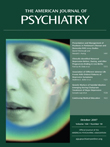The Sphinx on the Table: Sigmund Freud’s Art Collection and the Development of Psychoanalysis
Freud was a collector of antiquities—Roman, Greek, and especially Egyptian. He had assembled several thousand, mostly small sculptures, by the time he was forced to flee Vienna for London and was pleased that he was able to take them with him. They filled his consultation room, covered his desk, accompanied him on his summer vacations, and he loved to handle them. As a small boy, he collected toy soldiers, and Burke speculates that their size, easy to fit in the hand, determined the size of the objects he later collected (p. 182).
He lived in the era of great archeological exploration—Schliemann unearthed Troy when Freud was 15; Evans excavated Minos at Knossos on Crete when he was in his forties, and Carter discovered Tutankhamen’s tomb when he was in his sixties. He compared psychoanalysis with archeology in a series of metaphors that evolved and became more sophisticated over the years—from uncovering a concealed past to constructing a plausible model of what might have been, consistent with the fragments that had been preserved to recognizing the way in which remnants of varying epochs can become intermixed and the record difficult to dissect.
This would seem to provide an opportunity for an interesting perspective on Freud’s thinking, the way in which his passionate avocation influenced his ideas, and the subtitle of this book’ Sigmund Freud’s Art Collection and the Development of Psychoanalysis , promises just that. Unfortunately, the book itself misses the mark.
Its intended audience is unclear. It has some of the trappings of scholarship (341 pages of text with 876 end notes), but not others (the index is poor). It has almost nothing to say about psychoanalysis itself—the ideas or the treatment. It merely borrows the “pop” notions of sex and symbols. Freud is treated as a celebrity, and the result reads like a popular magazine article about the personal life of a public figure—his family, his habits, his hobbies, his quirks—but not the contributions to the world for which he is famous.
Instead, the text is “padded” with a large number of tangential comments that have little to do with psychoanalysis, Freud, or his collection, but expand on a place, person, or an item that comes up in passing. The result is a collection that reads like notes torn from a tour guide. Thus, there are pages about how the Louvre acquired its Egyptian collection, about Impressionism, and about Renoir before we are told that Freud had no interest in Impressionism, archeologists he admired but never met, and myths related to figures represented in his statues, with no reason to believe he knew of or was influenced by them. Baedeker and his son are discussed because Freud once consulted their guidebook! In keeping with the celebrity magazine theme, it stretches to include sexual tidbits, e.g., “without any firm evidence to the contrary, it is safe to assume that Freud remained a virgin until his marriage at thirty. Although by no means unusual for a young man of his time, it is curious simply because Freud was Freud” (p. 43), i.e., we know nothing about his sexual behavior; therefore we assume him to be average, but how odd that he is only average! At the same time, Burke makes no mention of the much more relevant extensive research into Freud"s probable affair with his sister-in-law Minna or his role in both Jung’s and Ferenczi’s sexual involvement with patients, although she does discuss Freud’s personal and professional conflicts with each of them.
Burke’s Freud is somewhat different from the more traditional idealized image. She describes him as a compulsive spender, “a quietly vain man” (p. 97), and “foppish even by Viennese standards” (p. 98). However, like the rest of the book, these read like inferences based on a phrase in some letter or document; we are never given a three dimensional, coherent portrait.
There are several biographies of Freud, including the three-volume landmark work by Ernest Jones (1) , an abridged version of Jones’s text (2) , and Peter Gay’s later study (3) . An excellent history of psychoanalysis by George Makari is slated for publication in 2008 (4) . There is also an important volume of articles about Freud’s art collection (5) , which Burke cites frequently. The Sphinx on the Table does not compete with any of them. It offers only a few anecdotes, along with speculation and inferences, that tell us more about how the 21st century treats celebrities than about Freud the founder of psychoanalysis and passionate amateur collector of antiquities.
1. Jones E: The Life and Work of Sigmund Freud. New York, Basic Books, 1953Google Scholar
2. Jones E: The Life and Work of Sigmund Freud. Edited by Trilling L. and Marcus S.. New York, Basic Books, 1961Google Scholar
3. Gay P: Freud: A Life for Our Time. New York, W. W. Norton and Co., 1988Google Scholar
4. Makari G: Revolution in Mind: The Creation of Psychoanalysis. New York, Harper Collins (in press)Google Scholar
5. Gamwell L, Wells R (eds): Sigmund Freud and Art. His Personal Collection of Antiquities. Binghamton, State University of New York, 1989Google Scholar



